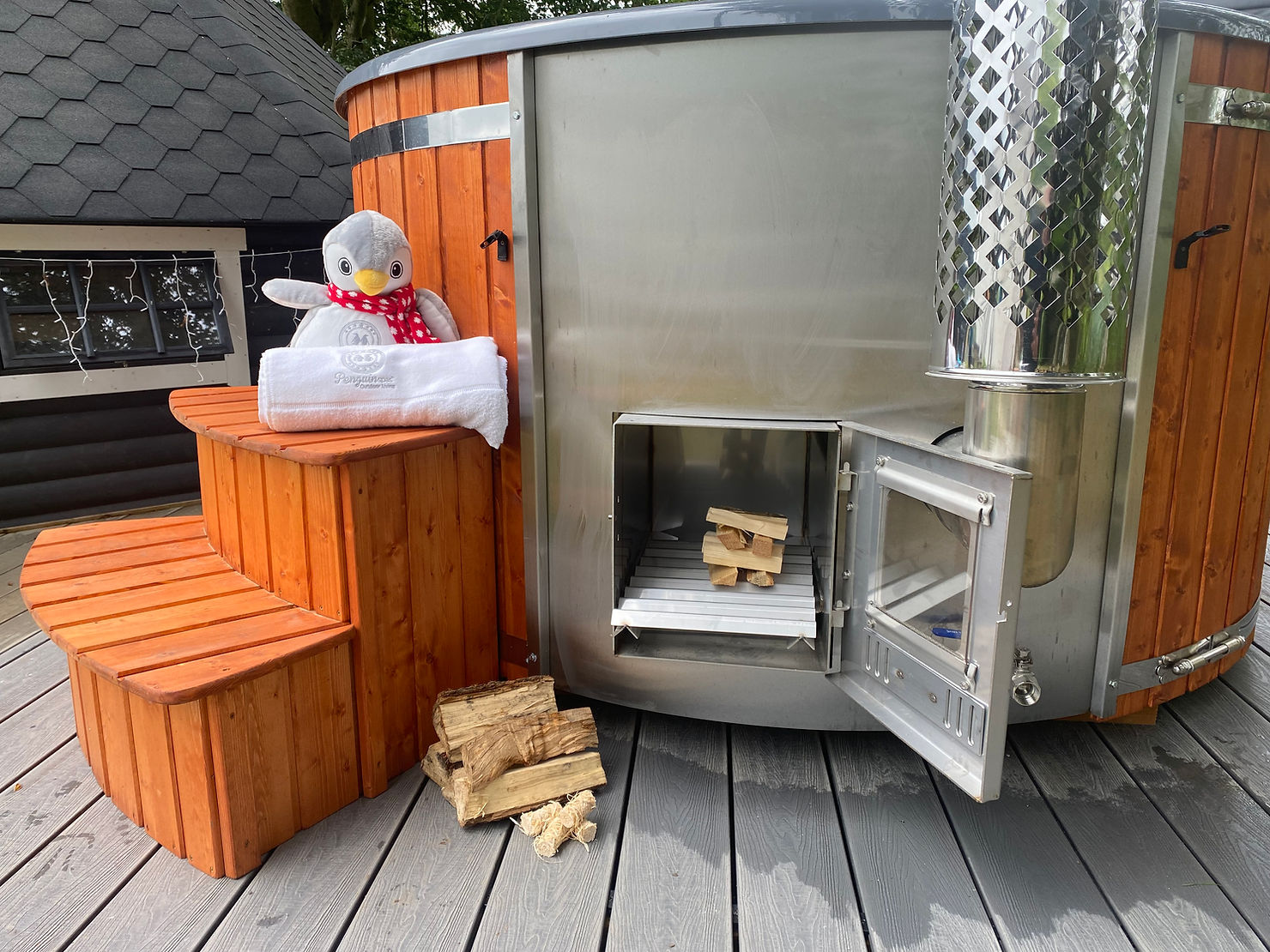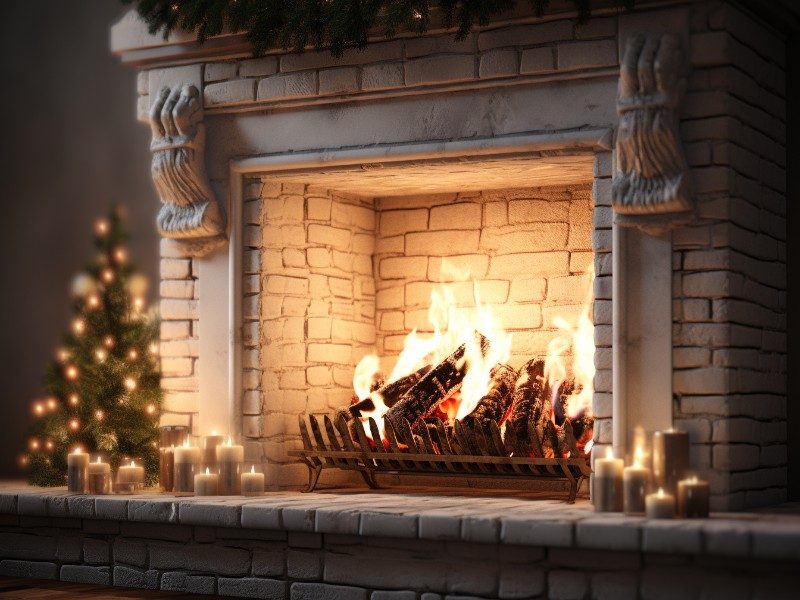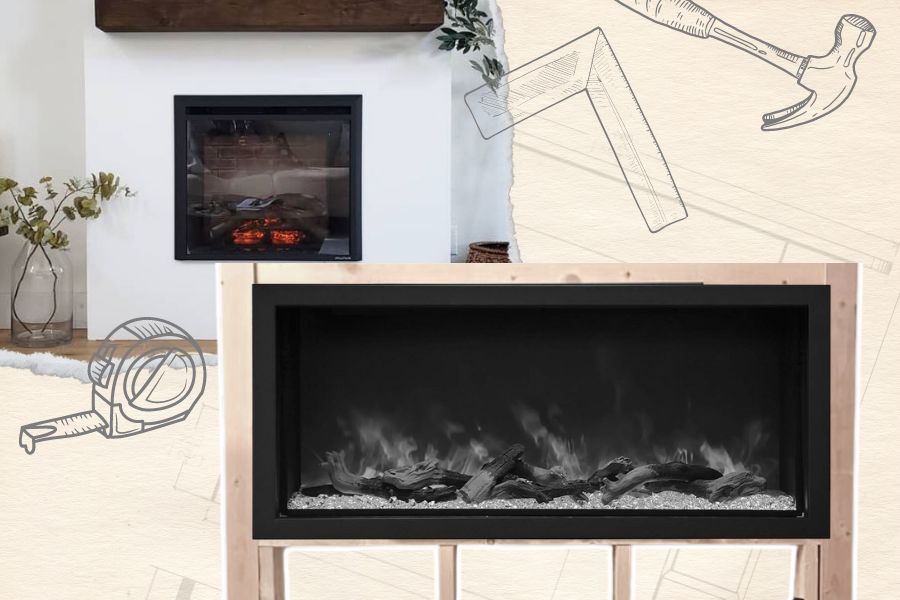To circulate heat from a fireplace to another room, utilize a forced-air heating system’s fan to distribute the warmth generated by the fireplace effectively. This method is most suitable for open-concept spaces and smaller residences with minimal heat loss through the vents.
Efficiently heating your home using a fireplace involves more than just lighting a fire. Maximizing the heat circulation from your fireplace to multiple rooms can significantly enhance your comfort during cold seasons. By implementing simple strategies and utilizing existing systems, you can ensure that the warmth generated by your fireplace reaches throughout your living space.
Understanding how to circulate heat effectively not only optimizes energy usage but also creates a cozy and inviting atmosphere in your home. Let’s explore some practical tips and techniques for distributing fireplace heat to achieve efficient heating in your living spaces.


Credit: dreifussfireplaces.com
How To Circulate Heat From Fireplace
To effectively distribute heat from your fireplace throughout your room, consider the following methods:
Use A Blower
- Utilize a blower to push warm air away from the fireplace and into the room.
- This helps in circulating heat more efficiently and evenly.
Use Your Hvac Thermostat
- Turn on your HVAC system’s fan to circulate the warm air generated by the fireplace.
- Ensure proper airflow to maximize the heat distribution in your space.
Additional Tips:
- Use good quality firewood to ensure optimal heat output.
- Check wood moisture levels with a wood moisture meter for efficient burning.
- Maintain and clean your chimney regularly to prevent blockages.
- Install glass doors to retain heat and improve circulation.
- Close the glass doors when the fireplace is not in use to prevent heat loss.
If you have a forced-air heating and cooling system, you can also utilize the fan to circulate the warm air produced by the fireplace, especially in more open spaces.
Heating Efficiently With A Wood Burning Fireplace
To circulate heat efficiently from a wood-burning fireplace, consider using a blower to distribute warmth throughout the room. Additionally, installing glass doors and cleaning the chimney regularly can help optimize heat circulation. Proper air circulation and maintaining the fireplace also contribute to efficient heating.
Clean Out The Ashes
Regularly remove ashes from your fireplace to ensure optimal heat circulation.
Air Circulation
Proper airflow is crucial for distributing heat effectively throughout the room.
Consider the following tips for better heat circulation:
- Keep the flue open to allow for better air circulation.
- Use a fireplace grate to elevate the fire and improve airflow.
- Position a fan near the fireplace to help push warm air into the room.
Tools For Fireplace Heat Circulation
When it comes to circulating heat from a fireplace, having the right tools is essential to maximizing the effectiveness of your heating system. Proper circulation not only improves the warmth of your home but also ensures that the heat is distributed evenly. Below are some essential tools that aid in effectively circulating heat from your fireplace.
Fireplace Heat Exchanger
A fireplace heat exchanger is a key tool for improving the efficiency of your fireplace. They are designed to capture and utilize the heat that would otherwise be lost up the chimney. Once installed, the heat exchanger helps to extract more heat from the burning wood and circulate it throughout the room, providing a more consistent and lasting warmth. It’s an ideal solution for maximizing the heat output of your fireplace while minimizing heat loss.
Fireplace Heat Deflector
Another important tool for fireplace heat circulation is the fireplace heat deflector. These deflectors are designed to redirect the heat emitted by the fireplace away from the wall or mantle and into the room. By doing so, they help to efficiently distribute the heat, ensuring that the entire space benefits from the fireplace’s warmth. With the use of a fireplace heat deflector, you can prevent heat loss and achieve a more effective circulation of warmth throughout the room.
Radiating Heat From Fireplace
A fireplace not only adds warmth and coziness to your home but also creates a beautiful focal point in the room. However, sometimes the heat generated by the fireplace doesn’t reach beyond its immediate vicinity, leaving the rest of the room chilly. To maximize the efficiency of your fireplace and ensure that the heat is circulated effectively, there are a few methods you can employ. In this article, we will focus on one specific technique: radiating heat from the fireplace.
Install A Fireback
One effective way to radiate heat from your fireplace is by installing a fireback. A fireback is a metal plate that lines the back of the fireplace. Its purpose is two-fold: to protect the masonry from damage caused by the intense heat and to radiate that heat back into the room when the fire dies down. By positioning the fireback at the back of the fireplace, it acts as a heat reflector, preventing heat loss up the chimney and instead directing it towards the room.
Using A Fan For Heat Circulation
Another method to enhance heat circulation from your fireplace is by using a fan. A fan helps to distribute the warm air throughout the room more efficiently. There are various types of fans available, such as built-in fireplace fans or standalone fans that can be placed near the fireplace. These fans work by drawing in cool air from the room and pushing it towards the heated area, thereby creating a convection current that circulates the warm air. This simple addition can significantly improve the overall heat distribution in the room.
In conclusion, if you want to make the most of your fireplace and ensure that the heat is radiated effectively, consider installing a fireback and using a fan for heat circulation. These simple yet effective methods can greatly enhance the warmth and comfort of your home during those cold winter nights. So, don’t let the heat from your fireplace go to waste – utilize these techniques and make your fireplace a true source of warmth and coziness.
Enhancing Heat Circulation With A Fan
If you want to maximize the heat output from your fireplace, using a fan is an effective method. A fan helps in circulating the warm air throughout the room, ensuring that every corner receives the desired warmth. Here are a few points to consider when it comes to enhancing heat circulation with a fan.
Convection Reaction
When you light a fire in your fireplace, the hot air rises and creates an upward flow. This process is called convection. However, relying on natural convection alone may not distribute the heat evenly. By incorporating a fan, you can speed up the convection process and create a better distribution of warm air.
Benefits Of Using Fans
Using a fan to enhance heat circulation in your fireplace offers several advantages:
- Better Heat Distribution: A fan ensures that the warm air spreads across the entire room, eliminating cold spots.
- Faster Heat Transfer: By using a fan, you can speed up the movement of warm air from the fireplace to other parts of the room.
- Increased Efficiency: With better heat distribution, you can achieve higher efficiency, as less heat is wasted.
- Improved Comfort: A properly circulated warm air creates a cozy and comfortable environment for you and your family to enjoy.
By utilizing a fan in conjunction with your fireplace, you can make the most out of the heat generated and ensure that every part of the room remains warm and comfortable.

Credit: www.amazon.com

Credit: myfire.place
Frequently Asked Questions On How To Circulate Heat From Fireplace
How Do I Circulate The Heat From My Fireplace To Another Room?
To circulate heat from your fireplace to another room, use your HVAC fan to push warm air through your home. This method is ideal for open spaces and smaller homes with centralized heating systems. Additionally, installing a fireplace heat deflector can direct heat outward into the room.
How Do You Redirect Heat From A Fireplace?
To redirect heat from a fireplace, use a fireplace heat deflector or hood to push heat outward into the room.
How Do You Radiate Heat From A Fireplace?
To radiate heat from a fireplace, use a fireplace heat deflector or hood to direct heat outward. Additionally, install a fireback, a metal plate designed to radiate heat back into the room. You can also use a fan to circulate warm air from the fireplace to the whole room.
Can You Use A Fan To Circulate Heat From A Fireplace?
Yes, you can use a fan to circulate heat from a fireplace. A fan helps spread warm air and amplifies the warmth to the whole room. It is especially useful if your fireplace only heats a small area.
How Can I Circulate The Heat From My Fireplace To Another Room?
If you have a forced-air heating and cooling system, you can turn on the fan to circulate the air created by your fireplace. This works best in open-concept spaces and smaller homes.
Conclusion
To effectively circulate heat from your fireplace and fully benefit from its warmth, it’s crucial to implement the appropriate measures. By utilizing a fireplace heat deflector and installing glass doors, you can ensure that the heat is efficiently dispersed throughout the room.
Additionally, maintaining proper wood moisture levels and implementing an air circulation system contribute greatly to the effective dispersion of heat. By following these simple guidelines, you can optimize the heat circulation in your home and create a comfortable living environment.